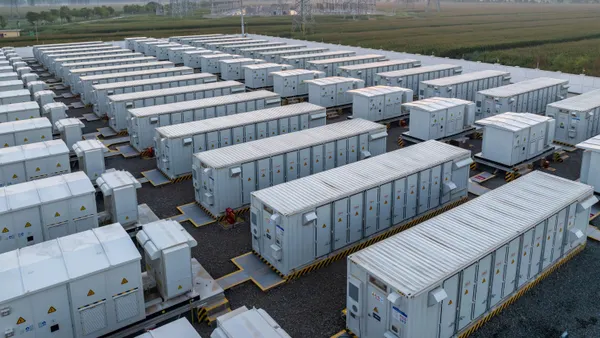Dive Brief:
- New York policymakers debated the merits of power purchase agreements and renewable energy certificates during a technical conference held last week to discuss how to meet the proposed Clean Energy Standard, RTO Insider reports.
- Industry stakeholders discussed whether PPAs, RECs or some combination of both would be the best way to meet the renewable goals without leaving customers exposed to the fluctuations of natural gas prices.
- A white paper released by the Public Service Commission Staff in January outlined the Clean Energy Standard and set interim renewable targets for utilities to meet, with the first goal set for 2017 and increasing every three years until renewables reach 50% of the state's power mix by 2030.
Dive Insight:
New York has been on the frontlines of change in the utility sector. As regulators look to achieve one of its goals — a Clean Energy Standard designed to wean the state off fossil fuels and ensure financial stability for its existing nuclear plants, currently under threat of being shut down — how to pay for renewable resources is a key challenge.
“Without question, thinking about how we are going to get new resources into our mix is key to our success,” PSC Chair Audrey Zibelman said at the conference, according to RTO Insider.
PSC Staff also recommended a set of tiers that separate new and existing renewable facilities that would qualify for meeting the Clean Energy Standard, with new facilities falling into Tier 1. Following the white paper, the PSC staff released a study in April that outlined how using PPAs and RECs could help utilities procure the 5.2 GW of Tier 1 renewables by 2023, one of the interim goals.
Some stakeholders at the conference argued that the PPA approach, with long-term contracts, will not reflect fluctuations in the energy marketplace. But others argued the current REC model alone wouldn't be able to drive the state to achieve its goal of sourcing 50% of its energy from renewables, RTO Insider reports.
“Yes, the REC-only approach has gotten us a good deal of renewables built, but if you look at the pace of what we’ve accomplished over the past 10 years, it is not enough to get us to 50%,” said Anne Reynolds, executive director of the Alliance for Clean Energy New York.
While the Clean Energy Standard plan has outlined a path to integrate more renewables, it also is a way to support struggling nuclear facilities. A proposed third tier is set for nuclear, and calls for utilities to source 15.7% of their power from the resource by 2020.












